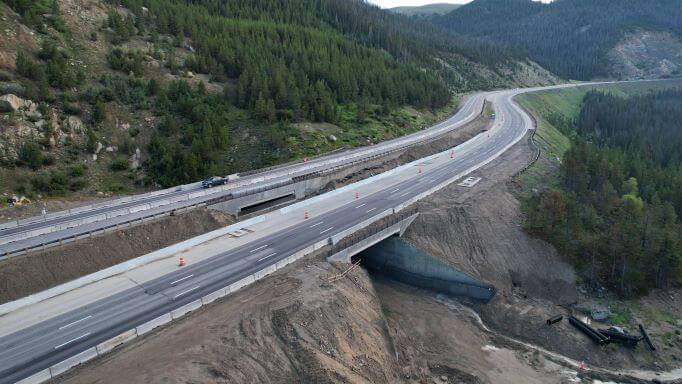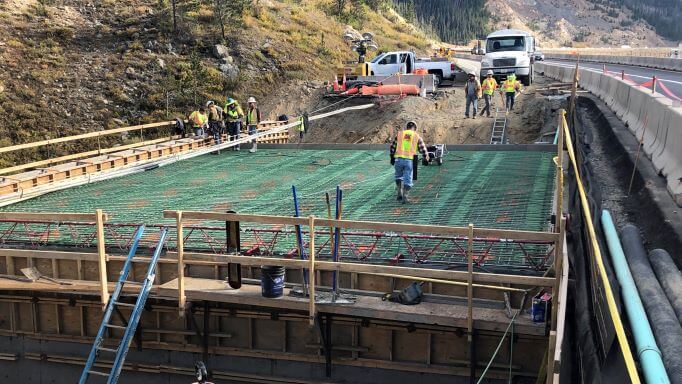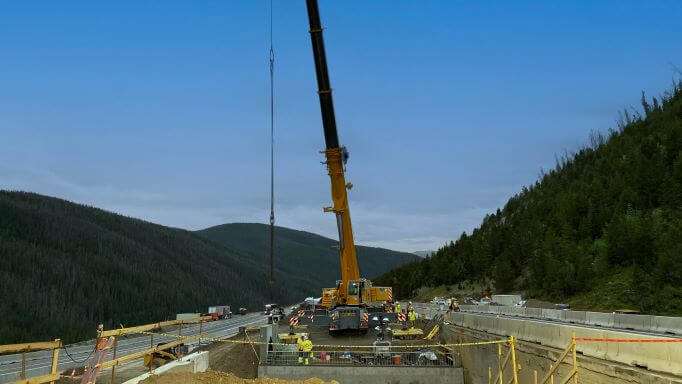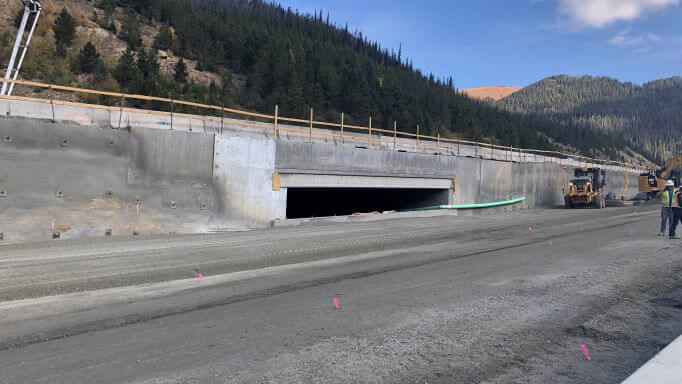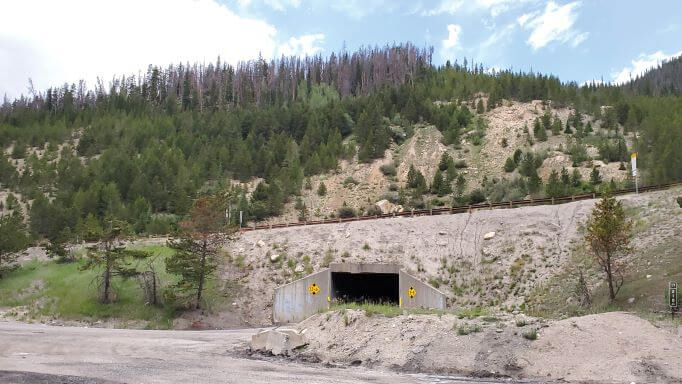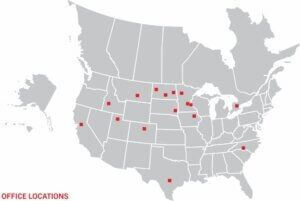It’s a stretch of road you’ll never forget. At slightly more than nine miles in length and rising up to 11,158-feet above sea level, the interstate between the Eisenhower Tunnel and Silverthorne, Colorado represents some of the most intense white-knuckle driving in the U.S. This is the welcome mat to Colorado’s famed Summit County, home to some of the best downhill skiing in the world.
At milepost 211 is F13-S_Minor, a 200-foot-long, concrete box culvert primarily used by the Colorado Department of Transportation (CDOT) as a turnaround point for snowplows and other emergency vehicles, which allows them to avoid going all the way into Silverthorne.
Built in the 1960s, CDOT determined it was time to replace the aging culvert with two separate bridges that meet a 100-year design life while reducing the risk of impacting an adjacent landslide area. The scope also included expanding a 20-foot-wide, single-lane underpass, which was functionally obsolete and structurally deficient, to a two- lane, 36-foot-wide underpass; and increasing the height by three feet to 16 feet, 6 inches.
CONSTRUCTION MANAGEMENT GENERAL CONTRACTOR METHOD INCREASES QUALITY, REDUCES UNKNOWNS
Ulteig engineers contended with several complex issues, including a landslide-prone slope northeast of the structure. During the 1960s, six landslides above I-70 were triggered during original construction. Ulteig designed the proposed bridges for a minimum of 4 feet of soil (instead of the current 18 feet) to be placed on top of it to prevent icing of the roadway. The structural portions of this project included soil nail wall abutments, instead of traditional sloped abutments, to reduce impacts to I-70 during construction.
Considering the complexity of this project, to be completed in 2022, CDOT utilized Ulteig’s Construction Manager/ General Contractor (CMGC) method. By involving the general contractor in the design and engineering process, Ulteig expects to obtain a higher quality design with fewer issues during construction. Constructability has been a facet of every conversation on the project, ensuring a product that can be built within the established design criteria.
“It was a challenging project, at an even more challenging location,” said CDOT Engineer Sarah Navarro, P.E., who partnered with Ulteig engineers. “The CMGC delivery method allowed our team to collaborate together and work fast to get the project to construction in roughly one year.”
ALTERING A ROADWAY THROUGH THE MOUNTAINS
One of the highest passes in Colorado, this stretch of interstate has three eastbound lanes and three westbound lanes on a maximum grade of seven percent. On one side, the mountain slope rises another 1,000 feet. On the other side, there’s a heart-stopping 500-foot drop that ends in Straight Creek. There are two runaway truck ramps, the second of which receives more trucks than all other runaway ramps in Colorado combined.
Mitigating against the risk imposed by the landslide area, Ulteig and CDOT engineers determined that I-70 westbound needed to be shifted up to 10 feet to the southeast away from the landslide. This shift makes this project not only a bridge replacement but also a major roadway realignment project with high visibility due to its location. Maintaining traffic, while reconstructing the roadway and structure in just 18 months, will require complex traffic phasing due to the narrow project site with a hillside to the north and a cliff to the south.
“This is one of the most complex road and bridge projects that we’ve ever worked on,” said John Butt, P.E., a technical manager on the Ulteig transportation team who served as project manager on the project. “With an eye toward the future, our job is to create a new bridge structure that will meet the needs of CDOT for the next 100 years.”

